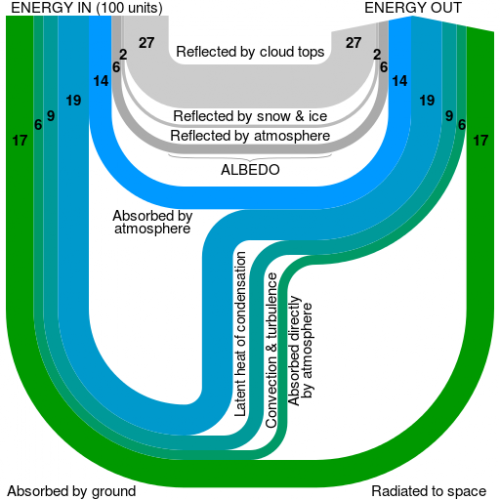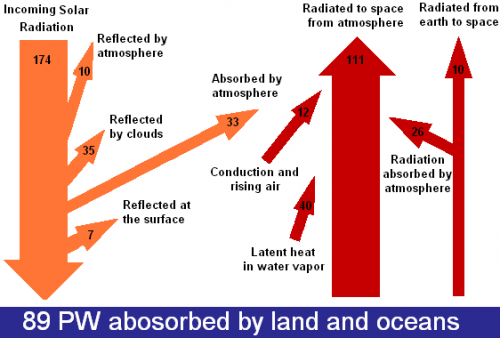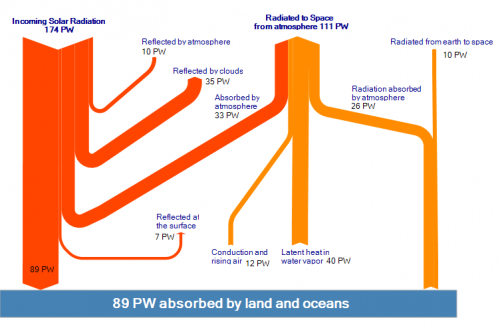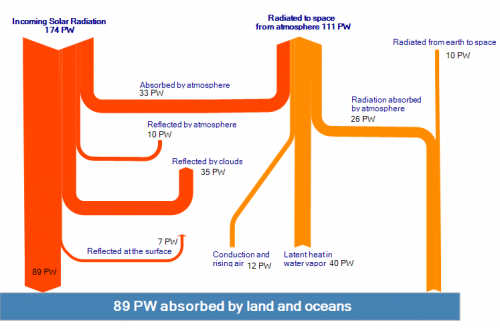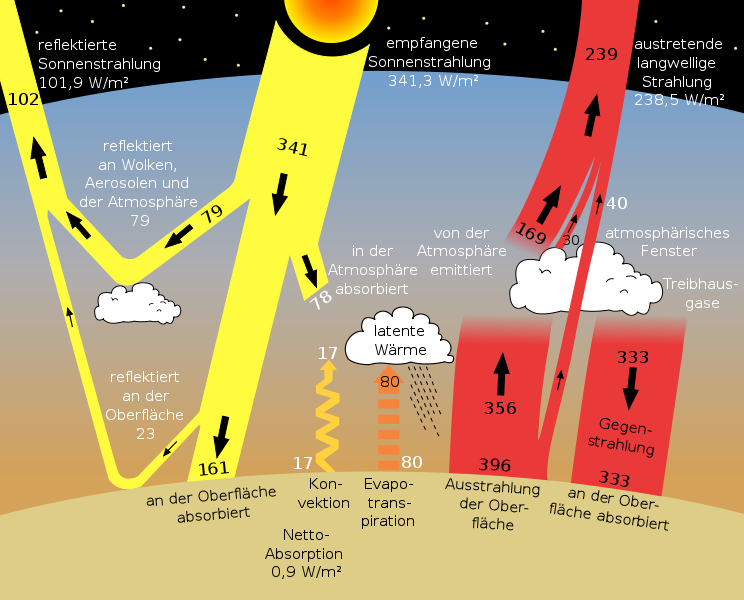The Wikipedia article on ‘Earth’s energy balance’ has recently been updated with another figure by user ‘Cmglee’.
It shows energy “in” from solar radiation, reflection, and energy “out” as heat into space.
This is a more abstract, yet at the same time brillant and beautiful representation of the greenhouse effect figure, that appears twice in the same Wikipedia article, and that I have presented in posts some years ago (here and here). These more infographic-ish figures are all derived from the original Kiehl and Trenberth (1997) work, if I am not mistaken.
Cmglee’s visualization reminded me of a bundle of ropes suspended at two points. Ropes of different diameter, of course, as it is common in Sankey diagrams. See more of Cmglee’s artwork here.
